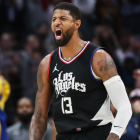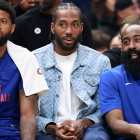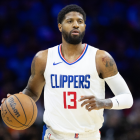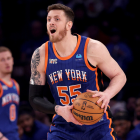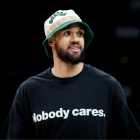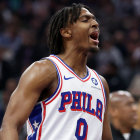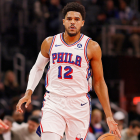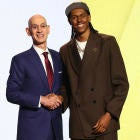Here's an NBA Draft trivia question that will stump you:
Q. Which college basketball program over the past seven years has had the most players drafted who weren't considered top-100 recruits when they entered college?
A. Scott Drew's Baylor Bears, with four: Ekpe Udoh, Pierre Jackson, Quincy Acy and Taurean Prince. No other college program during that seven-year stint has more than three.
And on June 22 Johnathan Motley, a long and versatile junior big man who has added a ridiculous 45 pounds of muscle since he first enrolled at Baylor three years ago, ought to be Baylor's fifth.
Motley's story -- a skinny Houston kid who was ranked as only the 130th player in 2013 national recruiting class according to 247Sports, but will likely be a late first- or early second-round pick -- is as improbable as those players who've come before him. Then again, most everything about Baylor basketball these days is improbable. It had been a moribund basketball program that had made one NCAA tournament in 53 years before Scott Drew took over on the heels of one of the most awful scandals in college basketball history. And since then Drew has performed magic, both at the college level -- seven NCAA tournament appearances and four Sweet Sixteens -- and at the NBA level, where Motley promises to be the ninth Baylor player selected in the past 13 drafts.
Motley's 2013 recruiting profile
I know I can come across as a shameless Scott Drew fan, which I am, but I can't emphasize this enough: Baylor's success over the past decade is one of the most remarkable stories in college sports.
Which begs the question: How?
How can Johnathan Motley go from a string bean into a beast in the post? How can Pierre Jackson go from an ignored recruit who headed to an Idaho junior college to an NBA draft pick? How can Ekpe Udoh go from 247Sports.com's 229th-ranked recruit in the country to the sixth overall pick in the draft? How can Taurean Prince go from the nation's 194th-ranked recruit to the 12th pick in the draft, and a rotation player as a rookie for a playoff team? How can Quincy Acy go from the nation's 194th-ranked recruit to a second-round pick?
Just one of these unlikely NBA success stories is a feather in a college program's hat. Five of these stories in this era is unprecedented.
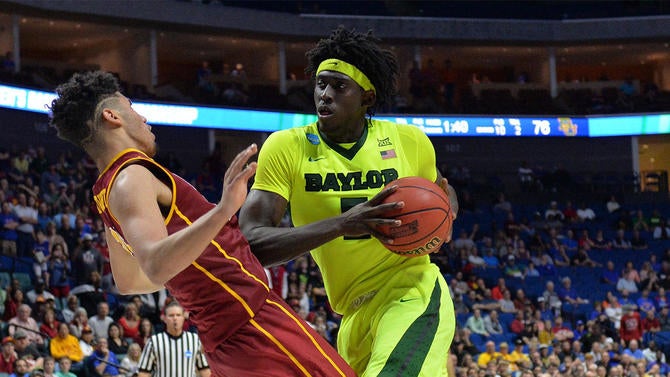
There's an easy explanation, and that's the one Motley gave me recently, after a battery of workouts for NBA teams like Miami, Orlando, Toronto and Phoenix.
"I knew I was small, so my redshirt year I just hit the weights every day," Motley told me. "Just kept working hard. I could bench 185 zero times when I first got there. I was 205 when I first got to Baylor. Now I'm 250. Strength training is A-1 at Baylor."
It's obvious any time the Baylor Bears hit the court: These are some big dudes. Strength coach Charlie Melton has been at Baylor for 12 years, and he's one of the best in the business. His background as a football strength coach at Florida State, where he trained 31 future NFL draft picks, makes sense: Former Baylor players like Prince or Acy or Rico Gathers would fit in as well on a gridiron as on the hardwood.
But there's more to it than just hitting the weights every day. It's a culture thing at Baylor. That's what I asked head coach Scott Drew about when I quizzed him on Motley's unlikely journey to the NBA, and how it fits right in with the other recent Baylor stories.
"That's a tribute to the upperclassmen preaching the importance of strength training to underclassmen," Drew said. "When you go up against somebody 20 or 30 pounds stronger than you, you see importance of it, the need to put on good weight.
"Honestly, it's our past players who, when they're seniors, they pour into the younger guys, and then after they graduate they come back in the summer and still stay in contact with the program. You take Quincy Acy -- he learned from Ekpe. You take Cory Jefferson, he learned from Quincy Acy. You take Perry Jones, Quincy Acy helped with him, too. With Motley, Taurean Prince and Rico Gathers helped him. In practice the young guys get better going against a lot of these bigs who are going to be pros. It's iron sharpening iron in practice."
Motley is an interesting case. He played on the same AAU team, the Houston Defenders, as the Harrison twins and Wesley Iwundu, a Kansas State player also expected to be drafted later this month. Drew first saw Motley play when he was recruiting Andrew and Aaron Harrison. He saw Motley's potential right away, and immediately the young man jumped onto Baylor's radar. Even as a high schooler, he could shoot it, pass it, dribble it -- a versatile game for a big man. The confidence was there, but the strength was not. Motley took a redshirt season that first year, building strength and in practice going up against two future NBA players in Jefferson and Prince, not to mention Isaiah Austin, whose NBA career was derailed by a diagnosis of Marfan syndrome. Motley turned from an effective role player his first two seasons at Baylor into a star by his junior year, when he averaged 17.3 points and 9.9 rebounds, was named an All-American and won the Karl Malone Award for the nation's top power forward.
Drew sees an award named after Karl Malone as an apt one for Motley to win. No, not because he believes Motley will become a future Hall of Famer. But because Motley was mostly overlooked as a high school player, just like Malone, who attended Louisiana Tech. Like Malone, Motley plays with a chip on his shoulder. Like Malone, Motley has an unreal work ethic, getting better every year.
Motley knows what he needs to work on in order to become a skilled, athletic four at the NBA level. Baylor is a system that takes an unpolished big man like Motley, bulks him up, and then gives him the freedom to succeed. The success of bigs is built into the program, Motley said. But Motley's outside shooting needs to become more consistent. He models his game after Paul Millsap, a down-and-dirty power forward who simply outworks his opponents, but he knows that shooting 24.5 percent from 3-point range like he did at Baylor with limited attempts -- only 49 3-point attempts over three seasons -- isn't going to cut it in the NBA.
"I have a really good, pure stroke -- I just got to be sure I shoot it the same way every time," Motley said. "For me it's just repetition. Getting my muscles to remember the exact way to do it every time. It's putting in the work."
And that's the lesson he internalized from his time at Baylor: Put in the work, and the most unlikely of stories can come true.










